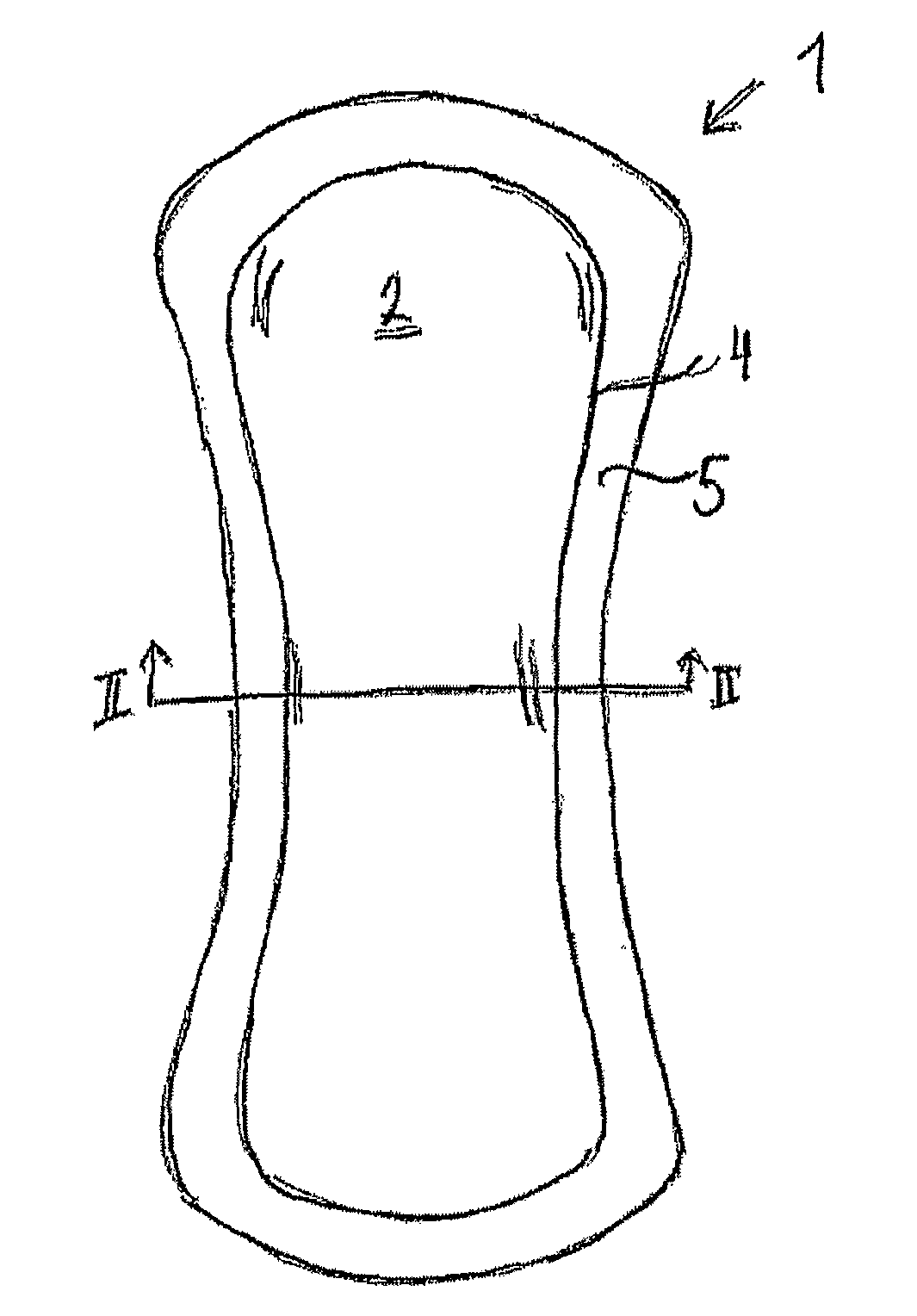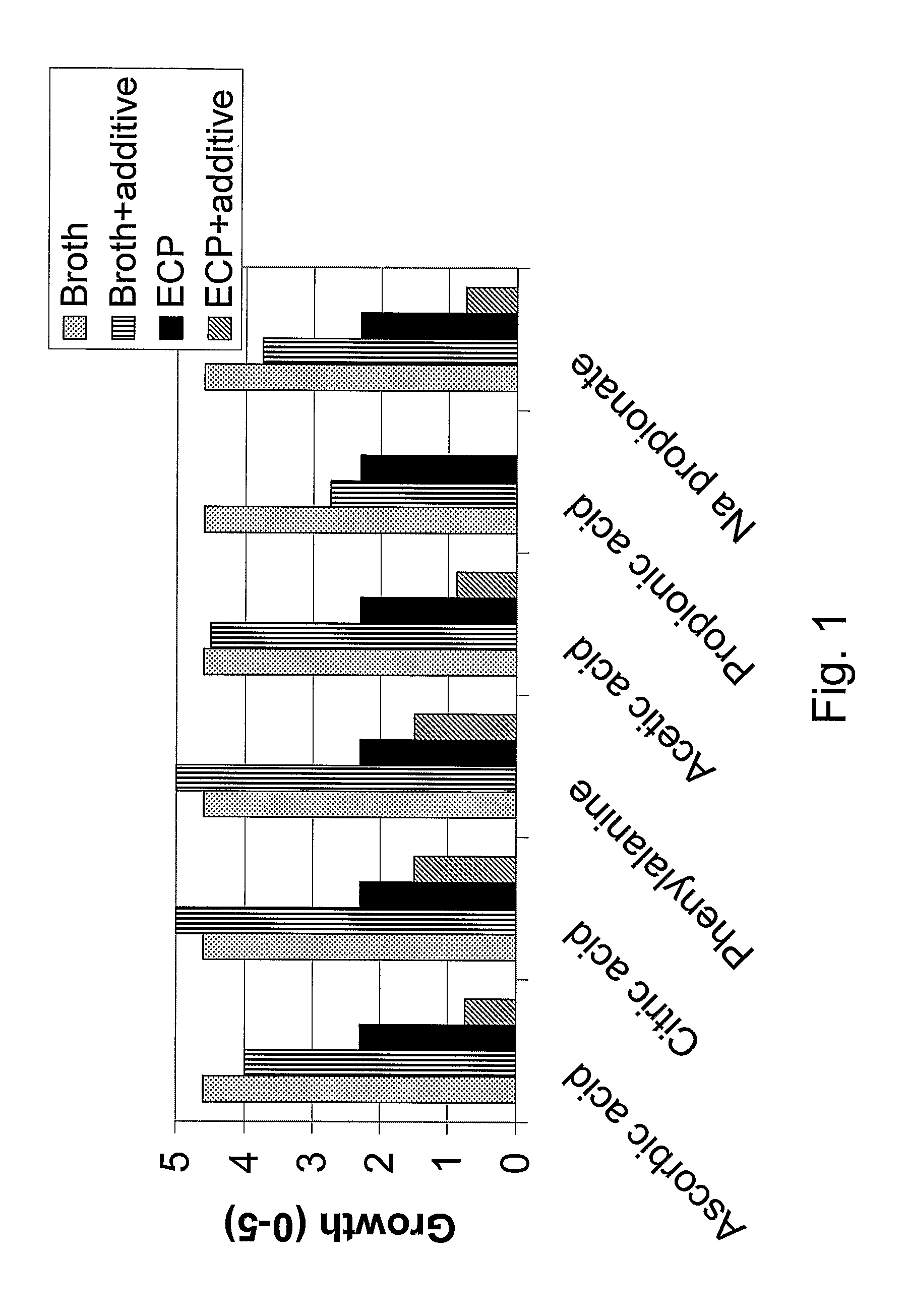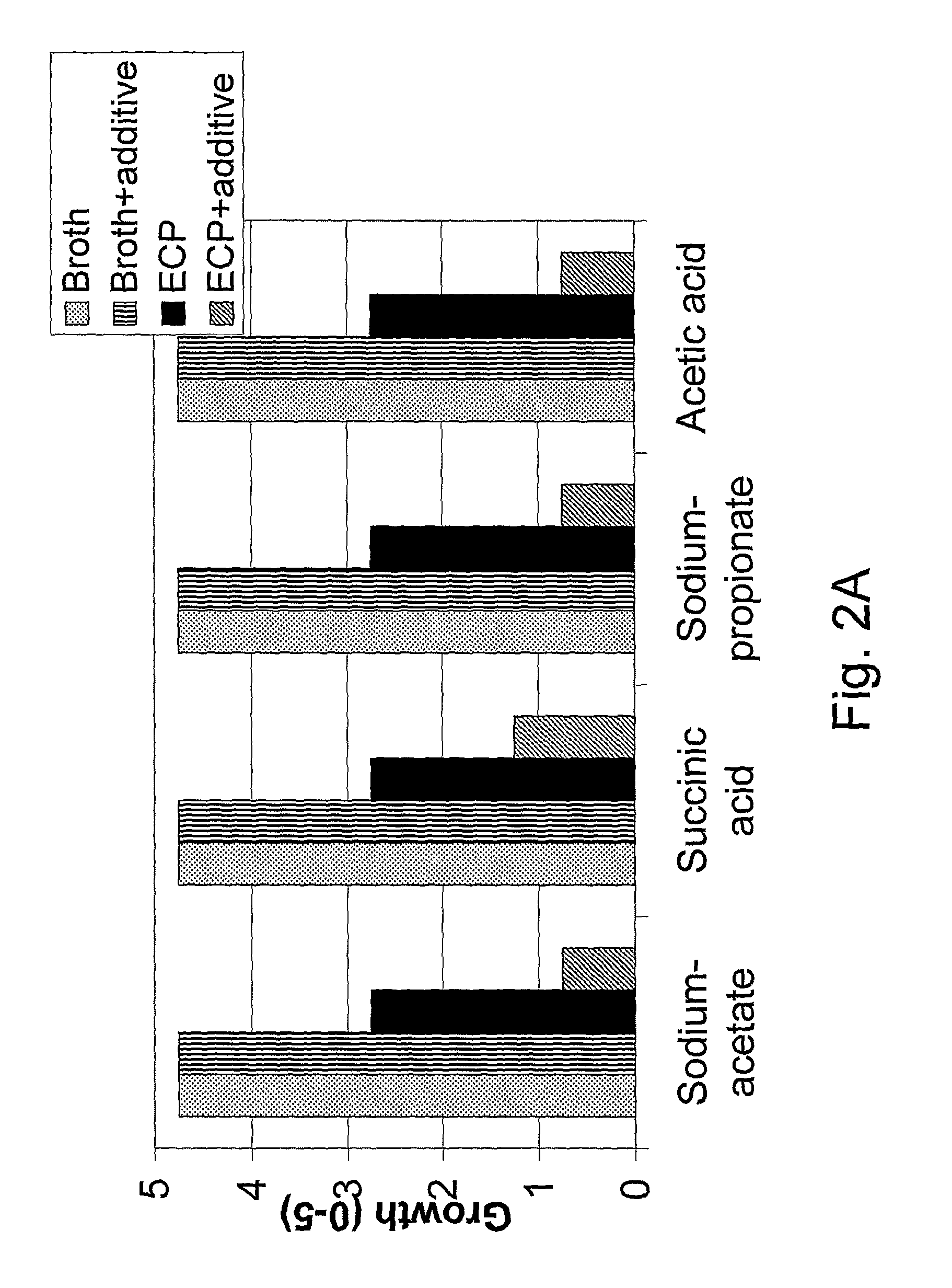Sanitary article comprising a microbe-inhibiting composition
a technology of microorganisms and articles, applied in the field of sanitary articles, can solve the problems of individual susceptible to microbial infections, urinary tract infections, and disturbance of the normal microbial flora, and achieve the effects of improving the prebiotic and/or probiotic effect, facilitating storage and transportation, and enhancing the probiotic and/or prebiotic
- Summary
- Abstract
- Description
- Claims
- Application Information
AI Technical Summary
Benefits of technology
Problems solved by technology
Method used
Image
Examples
example 1
Isolation and Typing of Ess-1
[0117]The initial purpose of this study is to isolate and type a Lactobacillus strain that inhibit the growth of Candida albicans and Candida glabrata to a large extent compared to other Lactobacillus strains.
Method
Yeast Strains
[0118]Clinical isolates of Candida albicans and Candida glabrata were used as test strains. These were isolated from the vagina of women with vaginal candidiasis and from healthy females.
Screening I.
[0119]About 140 Lactobacillus strains, originating from human skin, throat, teeth, baby faeces, vegetables and seeds were cultured in MRS broth and stamped onto MRS agar plates. The agar plates were incubated under anaerobic conditions at 37° C. Additionally, SAB (Sabouraud) agar (LAB M, Bury, UK) was poured onto the MRS agar and was allowed to congeal. C. albicans culture was seeded onto the agar and the plates were incubated aerobically at 37° C. A visual evaluation of the inhibition was done. Strains inhibiting C. albicans equally o...
example 2
Production of Probiotic Lactobacillus
[0128]In laboratory scale: a sterile vessel with ex. MRS broth is inoculated with a pure inoculate of the desired lactobacillus strain. Broth with bacteria is incubated over night in 37 C.° and preferably with an atmosphere of 5% CO2. Cells may then be washed using centrifugation and sterile saline. Protective sugar, starch or proteins may be added and the cell-mass freeze-dried and milled.
[0129]In production scale, the working sead lot is fermented in different steps up to production scale. The production is controlled and optimised for the specific strain to be produced. After fermentation the culture is washed and / or only concentrated using cross-flow microfiltration or centrifugation. Protective substances according to the above are added and the cells can be freeze-dried and milled or spray-dried.
example 3
Production of Extracellular Product from e.g. Lactobacillus
[0130]In laboratory scale the overnight culture of the probiotic strain is produced as in Example 2. After filtration or centrifugation the supernatant is collected. The supernatant may be concentrated by evaporation or completely dried for ex. convective drying in dry air, freeze, drying or spray-drying.
[0131]In production scale the bacterial culture is fermented in accordance with Example 2. The extracellular product is obtained as a filtrate using cross-flow micro filtration or a supernatant using centrifugation. Also in this case it may be further concentrated using evaporation or completely dry using for eg. spray-drying.
PUM
| Property | Measurement | Unit |
|---|---|---|
| pKa | aaaaa | aaaaa |
| pKa | aaaaa | aaaaa |
| volume | aaaaa | aaaaa |
Abstract
Description
Claims
Application Information
 Login to View More
Login to View More - R&D
- Intellectual Property
- Life Sciences
- Materials
- Tech Scout
- Unparalleled Data Quality
- Higher Quality Content
- 60% Fewer Hallucinations
Browse by: Latest US Patents, China's latest patents, Technical Efficacy Thesaurus, Application Domain, Technology Topic, Popular Technical Reports.
© 2025 PatSnap. All rights reserved.Legal|Privacy policy|Modern Slavery Act Transparency Statement|Sitemap|About US| Contact US: help@patsnap.com



